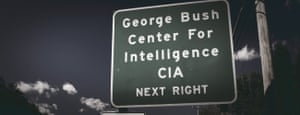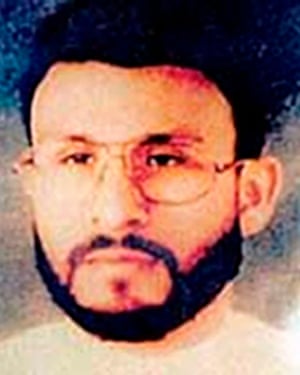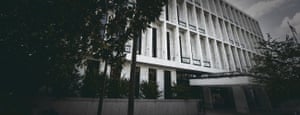Daniel Jones had always been friendly with the CIA personnel who stood outside his door.
When he needed to take something out of the secure room where he read mountains of their classified material, they typically obliged. An informal understanding had taken hold after years of working together, usually during off-peak hours, so closely that Jones had parking privileges at an agency satellite office not far from its McLean, Virginia, headquarters. They would ask Jones if anything he wanted to remove contained real names or cover names of any agency officials, assets or partners, or anything that could compromise an operation. He would say no. They would nod, he would wish them a good night, and they would go their separate ways.
After midnight in the summer of 2013, Jones deliberately violated that accord.
Jones, a counter-terrorism staffer, had become the chief investigator for the Senate intelligence committee, the CIA’s congressional overseer, on its biggest inquiry. For five years, he had been methodically sifting through internal CIA accounts of its infamous torture program, a process that had begun after the committee learned – thanks to a New York Times article, not the agency – that a senior official had destroyed videotapes that recorded infamously brutal interrogations. The subsequent committee inquiry had deeply strained a relationship with Langley that both sides badly wanted to maintain. The source of that strain was simple: having read millions of internal emails, cables and accounts of agency torture, Jones had come to believe everything the CIA had told Congress, the Bush and Obama White Houses and the public was a lie.
There was one document in particular that proved it. Jones and his team had found it years before, placed mysteriously onto a shared computer network drive the Senate intelligence committee investigators were using in northern Virginia, not far from CIA headquarters. But they hadn’t appreciated its full significance until the agency, in an attempt at refuting a report that was still far from publication, told Barack Obama’s staff that the committee was pushing a hysterical interpretation of the agency’s fateful post-9/11 embrace of torture. The document, prepared for Leon Panetta when he was CIA director, had reached the same conclusions about the torture program that Jones had. As long as Jones had it, he would be able to show that the agency knew full well how brutal the torture was; how ineffective its torturers considered it to be; and how thoroughly the CIA had covered all of that up.
As long as Jones had the document, that is. Lurking in the back of his mind was the event that had led him to devote five years of ceaseless work, through nights and weekends: the CIA had already destroyed evidence of torture. It did that before the Senate had launched an investigation, and long before that investigation had turned acrimonious.
Inside the small room in Virginia the CIA had set up for the Senate investigators, Jones reached for his canvas messenger bag. He slipped crucial printed-out passages of what he called the Panetta Review into the bag and secured its lock. Sometime after 1am, Jones walked out, carrying his bag as he always did, and neglecting to tell the agency security personnel what it contained. After years of working together, no one asked him to open the bag.
Outside the CIA satellite office in Virginia
Jones walked to the parking lot until he found his black Porsche Boxster. He tossed the bag onto the passenger seat and drove across the Potomac river, not stopping until he reached the Hart Senate office building on Capitol Hill. It was hours before dawn, but Jones walked into the building, sped to the second floor where the committee did its work, and placed the locked bag into a committee safe.
Jones, by accord, had significant access to classified agency material. He would not be leaking the Panetta Review to the public. He was ensuring its preservation so Congress could exercise its constitutionally mandated oversight on an agency with a vivid recent history of document destruction on precisely this issue. But Jones, in his first-ever interview, acknowledged to the Guardian: “We had crossed a bridge. For the first time we had knowingly violated a CIA agreement.”
It was an unfathomable turn of events, and it would have severe repercussions. Jones had years of training and experience handling classified material: before joining the Senate committee staff, he was an FBI counter-terrorism analyst. The Senate committee was not favorably inclined toward absconding with intelligence documents: its leadership was spending summer 2013 excoriating NSA whistleblower Edward Snowden as a traitor. But, Jones said: “I was afraid [the document] would be destroyed … I was the one saying, ‘We have to do this.’”
Jones takes “full responsibility” for taking the document, but will not clarify who actually made the decision. Senators on the committee say they learned about it after the fact rather than directing him to take the document, and support the decision to this day.
“I don’t disagree with it. I mean, look, Director [John] Brennan tried very hard to cover up the Panetta Review,” said Senator Ron Wyden, an Oregon Democrat and longtime intelligence committee member.
The CIA has stopped defending its torture program but not its personnel. While it has reknit its relationship to the committee, thanks to a GOP leadership that has all but disavowed the torture investigation, it continues to maintain that the torture report is inaccurate. Obama, whose trusted aide John Brennan runs the CIA, kept the report at arm’s length, with his administration declining even to read it.
But the CIA has gone beyond successfully suppressing the report. In a grim echo of Jones’s fears, the agency’s inspector general, Langley recently revealed, destroyed its copy – allegedly an accident. Accountability for torture has been the exclusive province of a committee investigation greeted with antipathy by Obama. While Obama prides himself on ending CIA torture, the Republican presidential nominee, Donald Trump, has vowed if elected to “bring back a hell of a lot worse than waterboarding”. Key CIA leaders defending the agency against the committee, including Brennan and former director Michael Morrell, are reportedly seeking to run Langley under Hillary Clinton.
This is the inside story of the Senate investigation into torture and the crisis with the CIA it spurred. It is formed from interviews with critical players in the drama, supported by voluminous internal reports and publicly available documents. Jones agreed to provide new details but would not discuss classified information with the Guardian.
When it came time for Brennan to talk publicly about the Senate inquiry, long after Jones’s predawn drive, he spent five minutes fitting the CIA’s torturers into the context of 9/11. But 9/11 changed Jones’s life as well.
A native of central Pennsylvania, Jones, now 41 years old, taught in Baltimore in his early 20s as part of the Teach for America program encouraging service in inner-city schools. After 9/11, he recalled, he wanted to influence public policy over the emerging war on terrorism, and sought work on Capitol Hill. An aide to Tom Daschle, then the Senate Democratic leader, advised Jones to instead spend several years at a counter-terrorism agency, like the CIA or FBI. The aide would eventually cross paths with Jones in a different capacity – he was Denis McDonough, the Obama confidant who would become White House chief of staff.
Jones arrived at the FBI in 2003 and spent the next four years there. The bureau was in the midst of a transformation: a generation after Congress had drastically reduced its domestic intelligence-gathering functions, following Nixon-era scandals, 9/11 had compelled its re-entry into the business of pre-empting homegrown terrorists. Jones set up shop in the counter-terrorism division as an analyst, primarily focused on al-Qaida and Sunni extremist groups and occasionally traveling overseas for his work. At one point, he was even detailed to the CIA.
But his future in the bureau was always limited, as he wasn’t a special agent, the field operatives who form the heart of the FBI. Sticking to his plan, Jones arrived on the Hill in January 2007, where his intelligence credentials helped find him a place working for Jay Rockefeller, a West Virginia Democrat and the chairman of the Senate intelligence committee.
Rockefeller told the Guardian that while Jones’s FBI experience qualified him to work on counter-terrorism issues on the committee, Jones’s time as a Baltimore teacher attracted Rockefeller’s interest.
“His decision to make this contribution before he began his career in national security told me something about his character and it was something to which I could relate. He impressed me then and I have only come to admire him more in the years since,” Rockefeller, who retired from the Senate in 2015, said.
The intelligence committee is a culture all to itself. Unlike most congressional panels, the vast majority of its work occurs in secret. It is term-limited, so members’ expertise levels vary. The byzantine rules of classification restrict staffers who might bolster legislators’ knowledge from accessing significant relevant information. Membership, particularly on committee leadership, instantly boosts the profile of ambitious legislators, who become de facto surrogates for intelligence officials on cable news. All of this means that a committee tasked as the primary avenue for imposing accountability on secret agencies faces the ever-present risk of becoming captive to the agencies they oversee.
Daniel Jones
Each element of the 16-agency intelligence community responds to the committee differently. As every intelligence service carries an inherent risk of scandal, they all have an abiding interest in keeping the panel on its side. The National Security Agency, the most powerful and technically sophisticated aspect of US intelligence, tends to send briefers to the Hill who wax loquaciously about the complicated details of its digital surveillance – which lends them an advantage over legislators afraid to admit what they don’t understand. The CIA, however, tends to duck uncomfortable questions by telling senators they’ll send responses later, the better to ensure accurate answers, and secure in the knowledge that busy legislators won’t often follow up. Yet its high-handed style tends not to provoke legislators who would prefer a close relationship with an agency many are inclined to see as performing unsavory tasks for the greater national good.
The committee’s internal politics also operate outside the partisan straightjackets that the broader Congress eagerly wears. Aside from the vanishingly few public hearings it holds – an annual threat briefing, a budget briefing, nominations for senior intelligence appointees – its work occurs in secret. That secrecy prevents the public from knowing the overwhelming amount of activity about its intelligence services. It also affords committee members the leeway to take positions in tensions with party leadership or to ask questions of intelligence briefers that don’t track conveniently with what their more ideological constituents would prefer. While there is a limit to how bipartisan or cross-ideological the committee will behave – former staffers are quick to point out that their work still occurs on the hyper-partisan Hill – both senators and staff describe the closed-door committee work as a venue where unity concerning national security can occur.
“It’s absolutely what people hope Congress is,” Jones recalled.
The torture report began in such a manner.
In November 2005, a senior CIA official named Jose Rodriguez destroyed 92 videotapes depicting the brutal 2002 interrogations of two detainees, Abu Zubaydah and Abdel Rahim Nashiri. Rodriguez’s tapes destruction remained a secret to his congressional overseers for two years, until a 6 December 2007 New York Times article revealed it; they barely even knew the CIA taped interrogations at all. Outrage was swift and, while tilted toward the Democrats, bipartisan, to include the éminences grises of the 9/11 commission. Even the US justice department began an ultimately fruitless inquiry. The Senate committee, then controlled by the Democrat Rockefeller, demanded an explanation.
Michael Hayden, the CIA director, provided an assurance. The CIA did not destroy evidence, Hayden told them, because the agency had extensive records of the interrogations, from field cables, memoranda and internal emails. It was the first time the committee had learned about the documentation of one of the agency’s major operations. Jones, a committee lawyer named Alissa Starkzak and two Republican staffers were tasked with combing through Langley archives and documenting what would have been on the destroyed tapes.
Both Jones and Starkzak – who declined comment to the Guardian – knew they would be looking through a soda straw. (The GOP staffers stopped coming to Langley after two or three visits, Jones recalls.) The material they reviewed covered only April to December of 2002. It occurred around only one black site, in Thailand, and concerned just two detainees. The heavily redacted material went only one way: cables back to headquarters, containing nothing about what agency leaders instructed their field operatives to do. Yet the material was extensive: the paper documents the agency permitted the staffers to see looked to Jones like an Encyclopedia Britannica.
What they found, over a half a year’s work examining just two detainees’ interrogations from the first year of the torture program, shocked them. It was widely known by 2008 that Abu Zubaydah was tortured. But Jones and Starkzak did not expect to see internal accounts detailing, by the minute, what the CIA did to him. They didn’t know, for instance, that interrogators had tortured him to the point that he would obey, like a dog, when they would snap their fingers, nor that they left a man suspected of knowing al-Qaida’s secrets alone for 47 days. The cables describe Abu Zubaydah as kept naked, filthy, stinking, shaking with fear, shoved inside a filth-riddled wooden box, defecating on himself. Agency personnel, in the official communications, get emotional and request transfers rather than continue torturing men they come to believe lack relevant information on terrorism. It immediately raised the question of what the CIA was really doing to dozens of other detainees at its black sites.
“I don’t think the CIA even knew what they were giving us, to be honest,” Jones said.
“These cables were the most graphic of all the cables to exist. Later on, as you go through the program, the cables get less and less detailed. To the credit of the agency personnel who were working on it, they were very detailed. … Everything that we were told was basically the opposite of what happened.”
That detail gave Jones his first recognition of the gulf between what the CIA actually did and what it told everyone outside of Langley that it did. Jones ended up creating a 29-page Microsoft Excel spreadsheet of the early days of CIA torture.
Behind closed doors in the Hart building, Jones presented his findings to the committee on 11 February 2009. Both Republicans and Democrats were shocked by “the incredible brutality of the program at a level beyond which anybody imagined,” Jones said.
The Hart Senate office building
11 February 2009
“At the back of the report, for what we called the ‘tapes investigation’, the staff created a chart that depicted the most torturous 17 days of Abu Zubaydah’s interrogation. It was almost a minute-by-minute chronology of what the CIA was doing to Abu Zubaydah, and how Abu Zubaydah reacted,” recalled Rockefeller.
“I think everyone on the committee – Democrat and Republican alike – was quite taken by this section of the report. It was hard to deny the ineffectiveness of the CIA interrogations, the brutality, or the fact that the committee had been deeply misled by the CIA.”
Some senators, particularly Republicans, were taken aback at the idea that the CIA would perform such acts. But Jones’s presentations that CIA interrogators knew the torture was useless – contradicting years of agency spin – did not attract significant interest from the senators.
“To me, I thought that’s what people would be taken with – holy shit, we’ve been sold a bill of goods,” he said. “But what they were really taken with was the brutality. … There was a bipartisan consensus that this can’t be the end, there’s got to be a final product, there’s got to be more here.”
Less than a month later, on 5 March 2009, the committee voted 14-1 to expand the investigation, the dissenting vote being Georgia Republican Saxby Chambliss. Instead of examining Rodriguez’s destruction of the videotapes, now the Senate committee would investigate the entire torture program. Part of Jones’s new mandate was to assess whether the CIA “accurately described” its torture program within the Bush administration and to Congress. Still, some of the Republican members imposed limits on the investigation’s scope: Jones couldn’t look at the Bush White House, just the CIA.
The announced inquiry came at an uncomfortable time for the CIA and the White House. Since Obama won the presidency in November, human rights groups had spent four months pressing for a reckoning with torture.
While Obama shut down the torture program on his second day in office, he also said that his focus as president would be to “look forward as opposed to looking backwards”. A senior campaign aide and former senior CIA official, John Brennan, became his chief White House adviser for counter-terrorism, a signal that Obama did not wish to have antagonistic relations with Langley. His choice for CIA director, after Brennan’s equivocations on torture raised red flags for liberals, was Leon Panetta, a longtime Democratic congressman and consummate insider.
Obama’s eagerness to turn the page on torture alarmed some of his allies. The Democratic chairmen of the House and Senate judiciary committees, Patrick Leahy and John Conyers, were pushing for broad investigations into both torture and mass surveillance.
In February 2009, Antonio Taguba, the army major general who blew the whistle on Abu Ghraib, joined a coalition of 18 human rights groups pressing Obama and the Democratic Congress for an independent truth commission on torture. They had support from very senior Democratic legislators, including House speaker Nancy Pelosi, Senate judiciary chairman Patrick Leahy and House judiciary chairman John Conyers. Activists petitioned attorney general Eric Holder to appoint a special prosecutor for the agency.
If the White House and the CIA didn’t like the intelligence committee looking into the CIA’s recent past, they would like an unpredictable 9/11 Commission-style panel and an independent prosecutor far less. The secretive panel, with its longstanding ties to Langley and its Democratic leadership, seemed like a safer option. An added political benefit was the committee’s new chair: Dianne Feinstein of California, who had a long history of disappointing liberals over national security.
Still, the CIA had some caveats.
Usually, when the Senate committee investigates the intelligence agencies, it does so on its home territory. The business of the committee, to include investigations, occurs in secure, locked rooms at the Hart building. Members and staff leave their phones outside; staff who lack the appropriate security clearances do not enter. The entire premise of the intelligence committees, established in the 1970s, was their unique fitness within Congress to handle classified material in order to provide accountability on secret agencies.
Panetta wanted a different arrangement. The CIA was forecasting the provision of between three and six million pages of relevant documents. Panetta’s aides voiced concern that they could not abide names of operatives, locations of black sites and countries cooperating in the torture program transiting to Capitol Hill. Either the committee would have to wait on the delivery of the documents until after the agency painstakingly redacted its material – a process with no defined endpoint and likely to last months, if not years – or it could set up shop in a satellite CIA facility in northern Virginia.
Further Reading:






Geen opmerkingen:
Een reactie posten